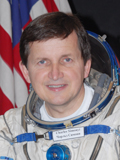Charles Simonyi, Intentional Software Corporation

Charles Simonyi is co-founder of Intentional Software Corporation. The company, started in August 2002, accelerates innovation by integrating the business domain experts into the software production process.
Simonyi was employed by Microsoft Corporation from 1981 to 2002, where he held titles of Director of Application Development, Chief Architect, and Distinguished Engineer. While at Microsoft, Simonyi hired and managed teams that developed Microsoft Word, Microsoft Excel and other best selling software applications. Simonyi worked at Xerox Palo Alto Research Center (PARC) from 1972-1980 where he created the first WYSIWYG (what you see is what you get) text editor called Bravo. Born in Budapest, Hungary, Simonyi earned his B.S. in engineering mathematics from the University of California at Berkeley, and a doctorate in computer science from Stanford University. He received a honorary doctorate from the University of Pecs in Hungary, in 2001. Simonyi has been a member of the National Academy of Engineering since 1997, elected for his contributions to "widely used productivity software" and he is a Correspondent Member of the Hungarian Academy of Sciences. Simonyi has also been serving on the Board of Trustees of the Institute for Advanced Study in Princeton since 1998. He has endowed a chair for the Public Understanding of Science at Oxford University and a chair for Theoretical Physics at the Institute for Advanced Study, among many other educational and charitable contributions through the Charles Simonyi Fund for Arts and Sciences.
Simonyi is an avid collector of modern art, enjoys classical music and is an experienced pilot. He participated in the Soyuz TMA-10 mission to the International Space Station in April 2007.








